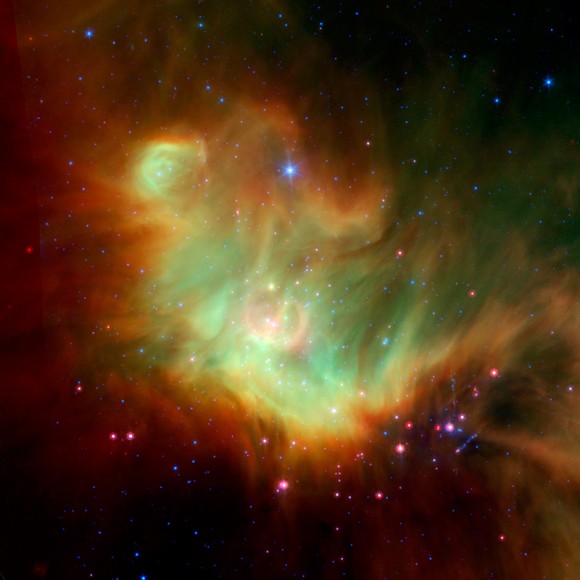

| Visitors Now: | |
| Total Visits: | |
| Total Stories: |

| Story Views | |
| Now: | |
| Last Hour: | |
| Last 24 Hours: | |
| Total: | |
Distant Star Goes Disco

Star-forming Region IC 348 Around Protostar LRLL 54361. Credit: Credit: NASA, ESA, J. Muzerolle (STScI), E. Furlan (NOAO and Caltech), K. Flaherty (University of Arizona/Steward Observatory), Z. Balog (Max Planck Institute for Astronomy), and R. Gutermuth (University of Massachusetts, Amherst)
A disco inferno in space? Astronomers have been keeping an eye on an unusual star that unleashes a burst of light every 25 days, like an extremely slow pulsating disco ball. Similar pulsating bursts of light have been seen before, but this one, named LRLL 54361 is the most powerful beacon ever seen.
Using the Spitzer and Hubble space telescopes, astronomers have solved the mystery of this star. It is actually two newly formed protostars in a binary system, doing a little disco dance of their own. And as they spin around each other on the smoky dance floor (actually a dense cloud of gas and dust), a blast of radiation is unleashed each time the stars get close to each other in their orbits. The effect seen by the telescopes is enhanced by an optical illusion called a light echo.
(…)
Read the rest of Distant Star Goes Disco (538 words)
© nancy for Universe Today, 2013. |
Permalink |
No comment |
Post tags: binary star system, Hubble Space Telescope, Spitzer Space Telescope
Feed enhanced by Better Feed from Ozh
2013-02-08 10:02:29
Source: http://www.universetoday.com/99810/distant-star-goes-disco/
Source:


